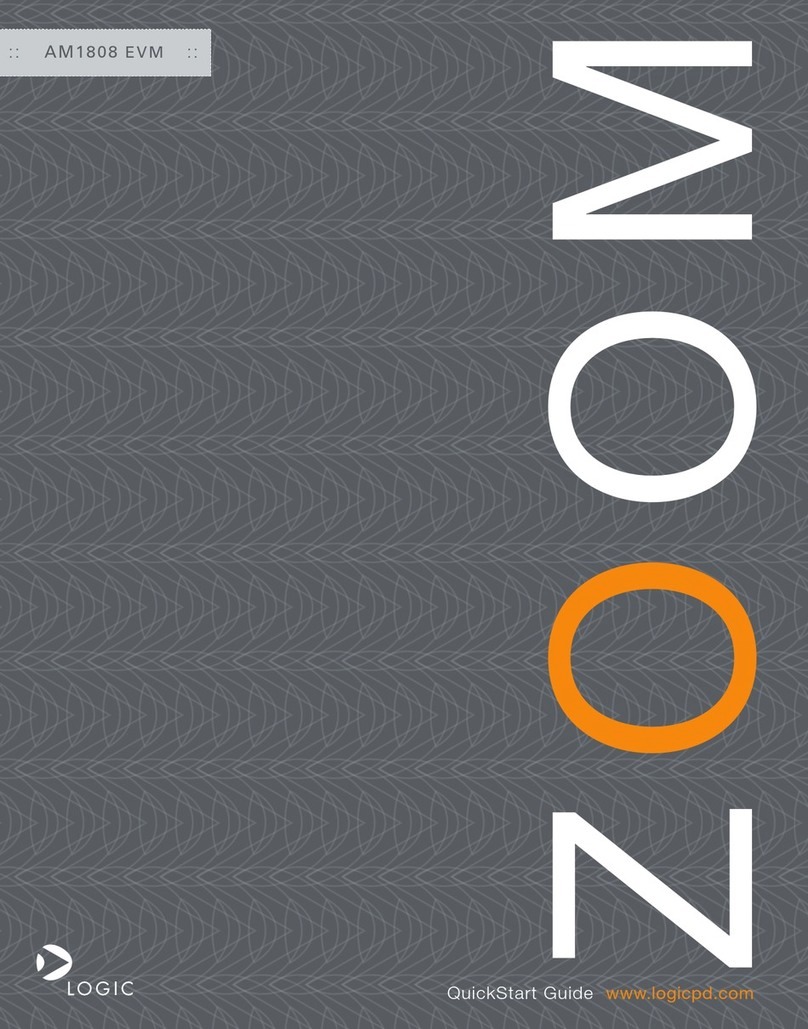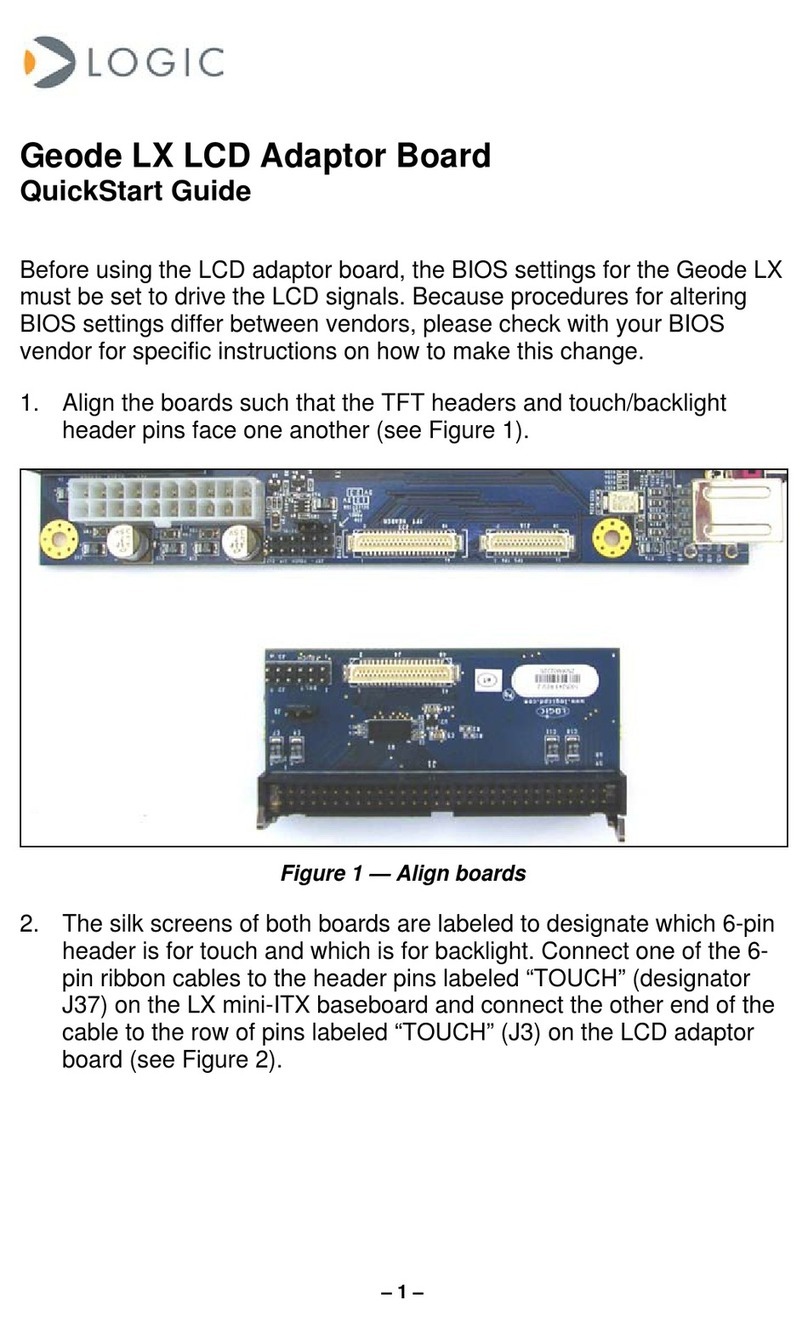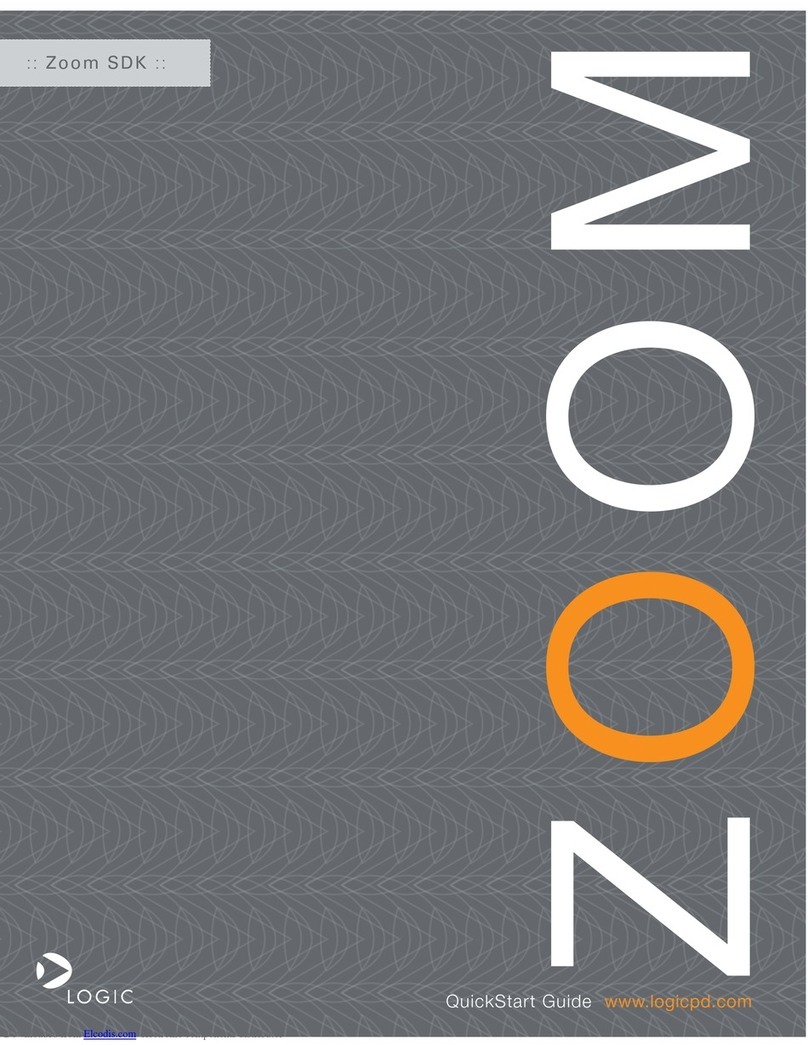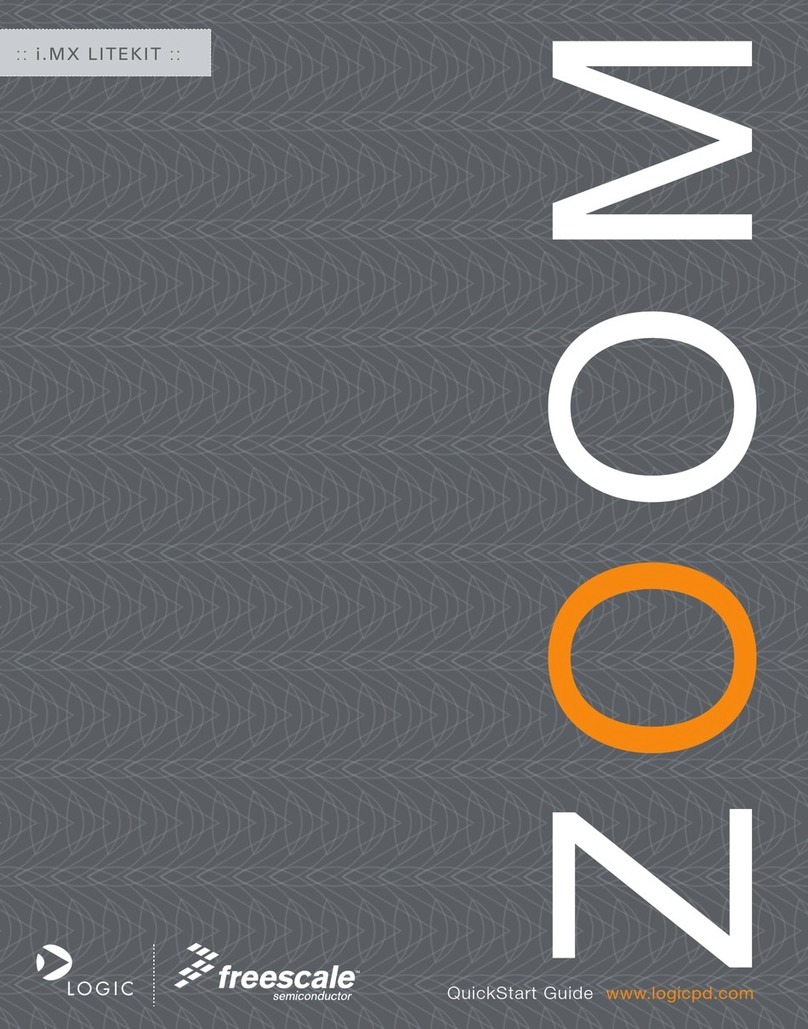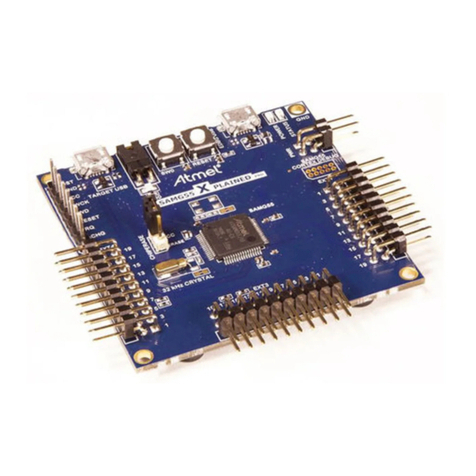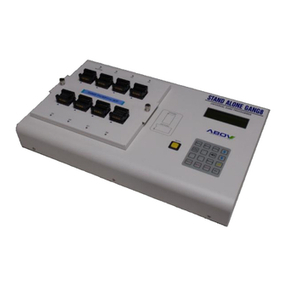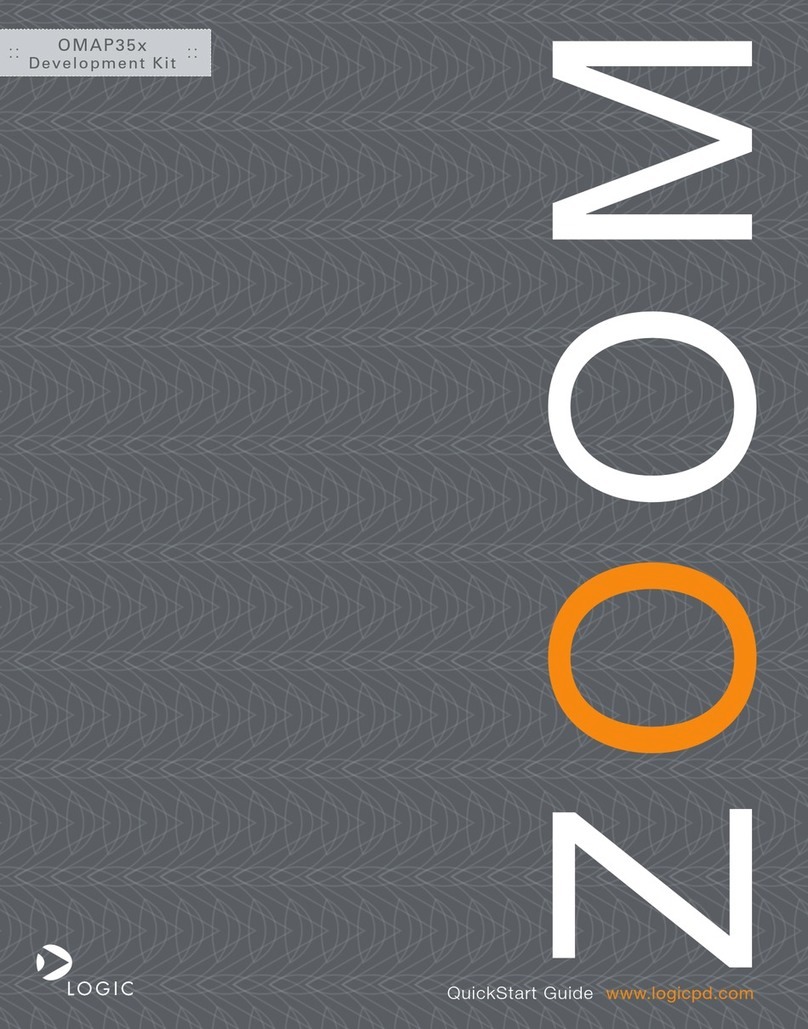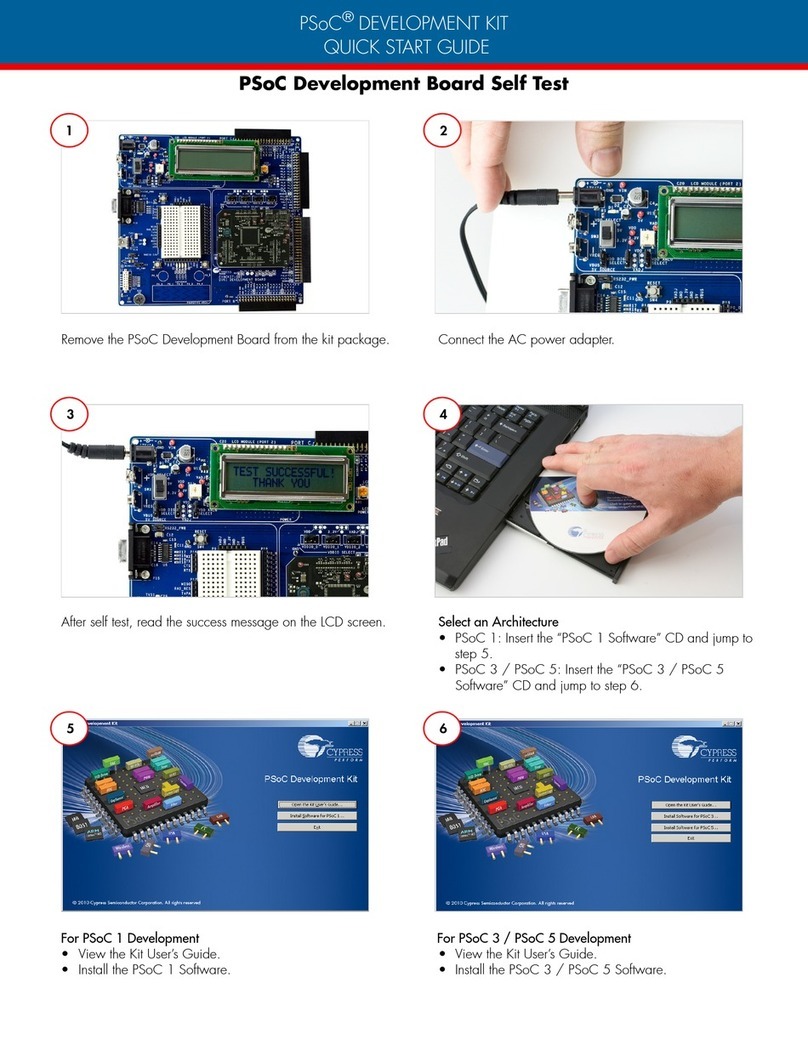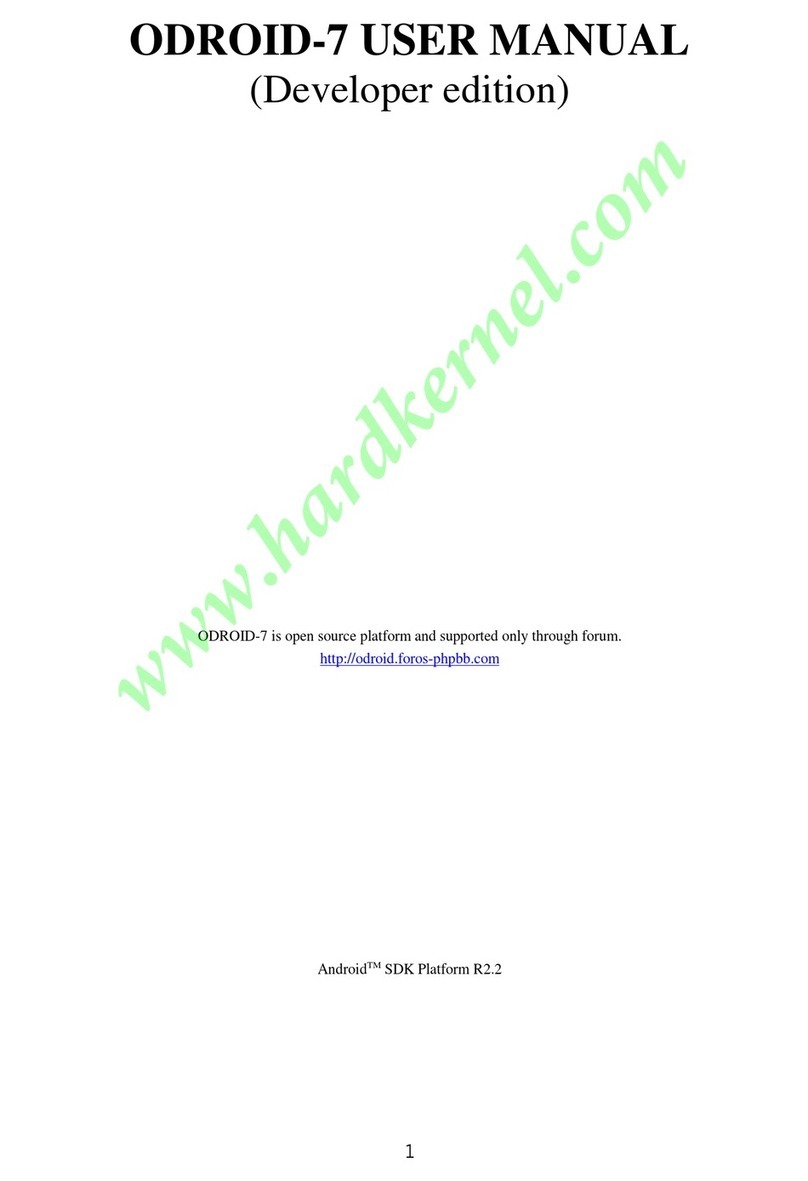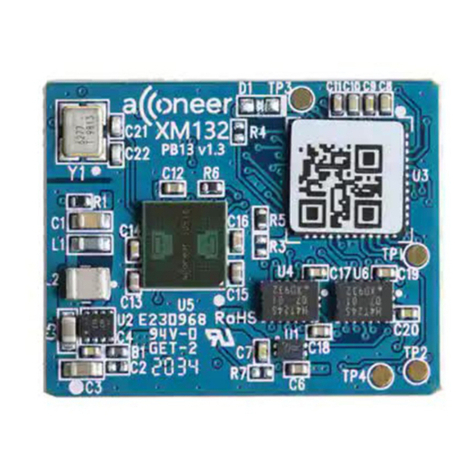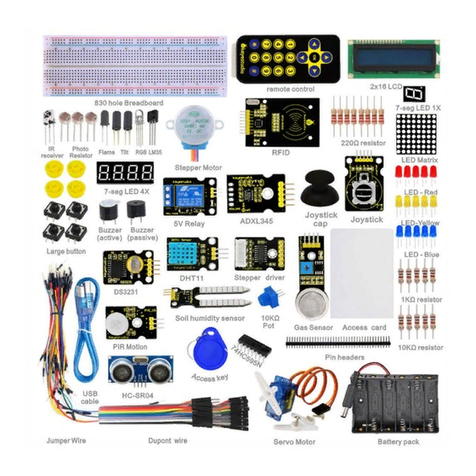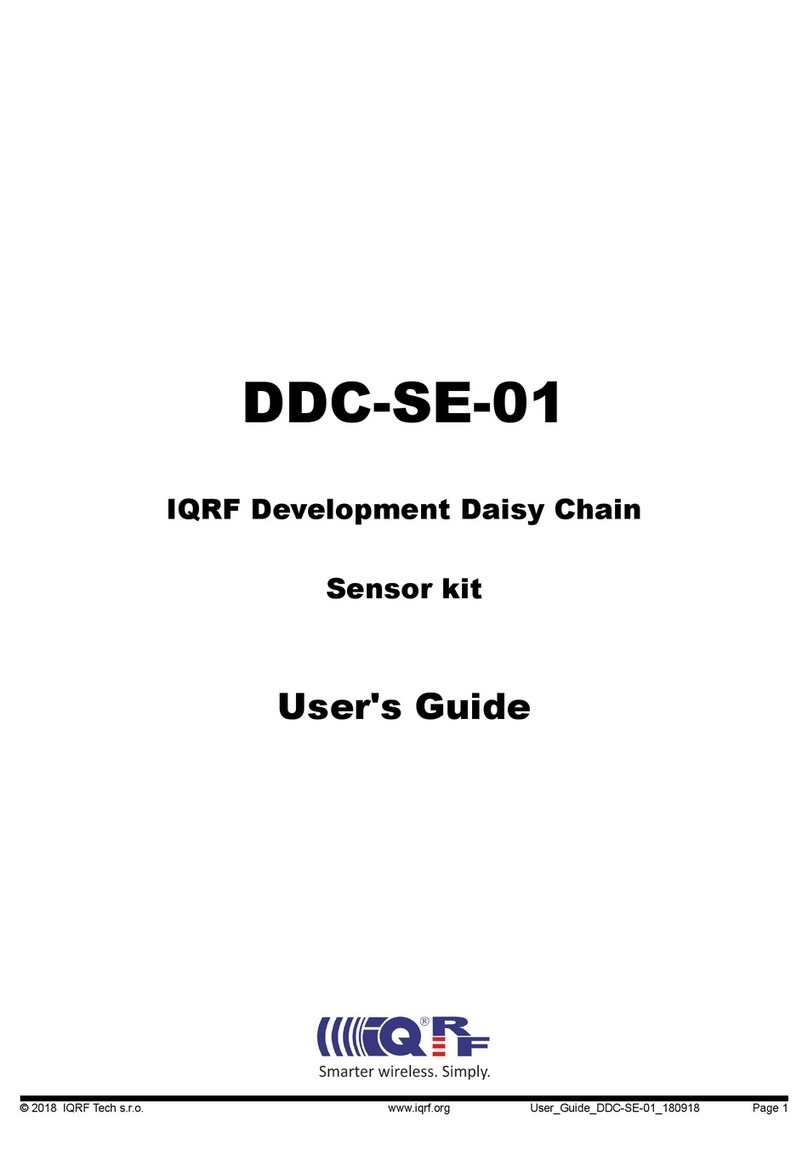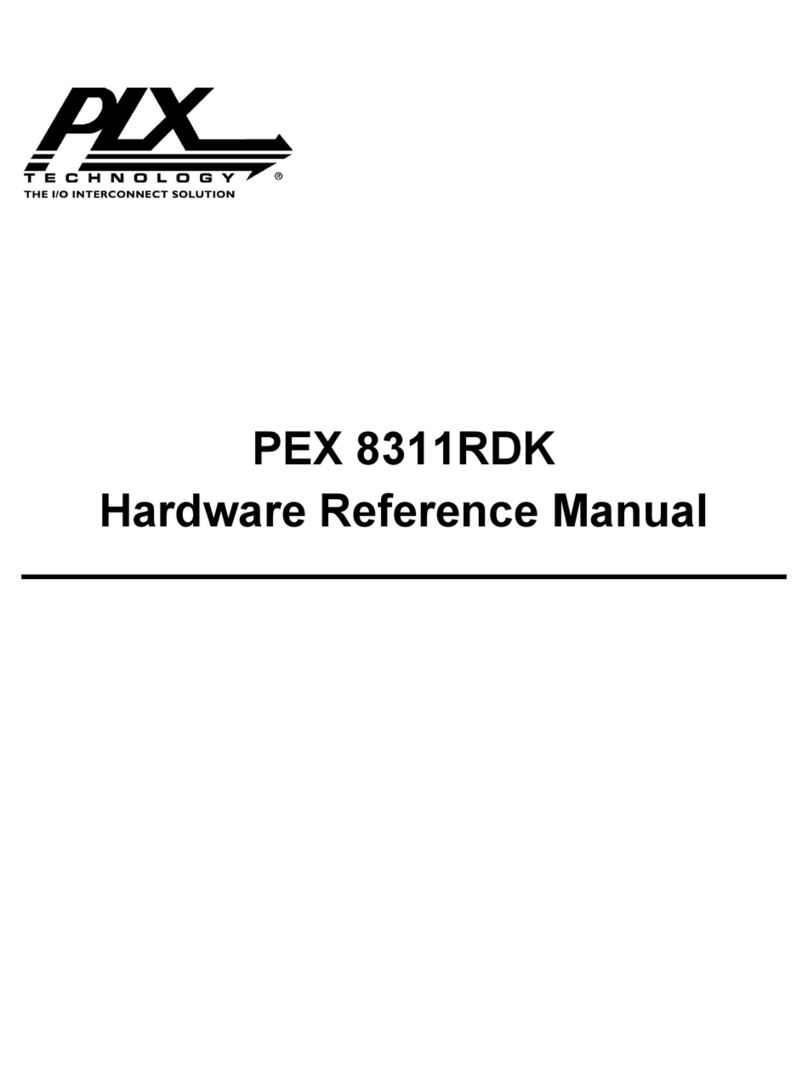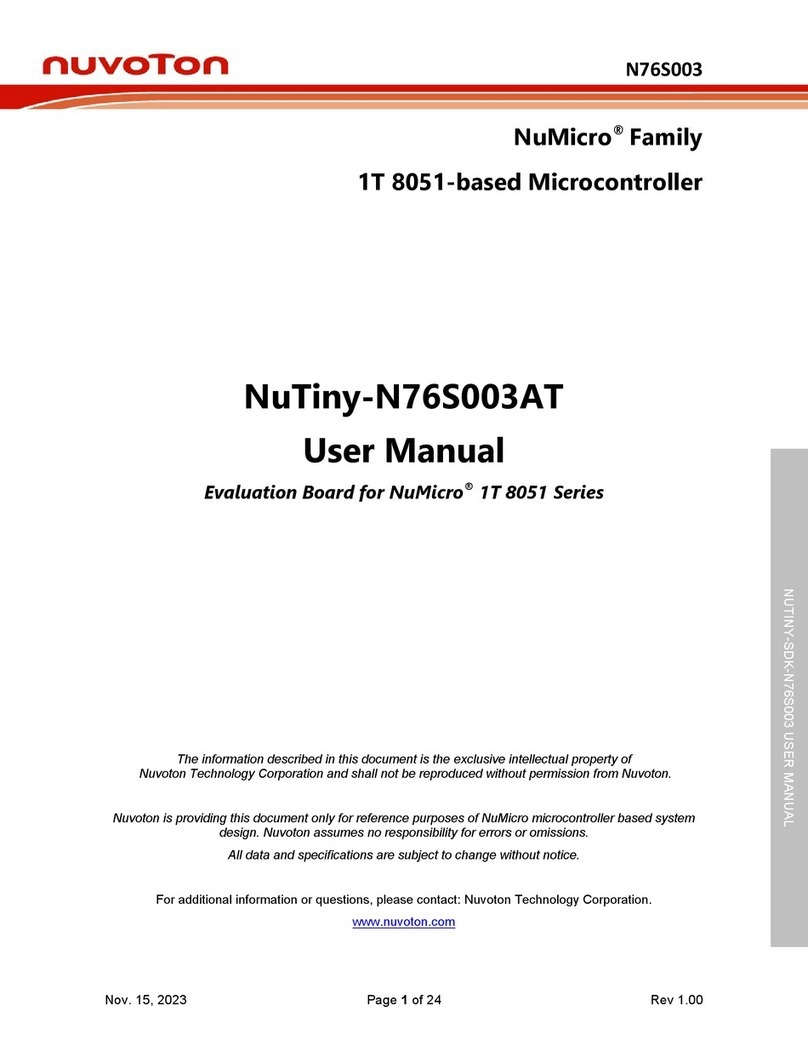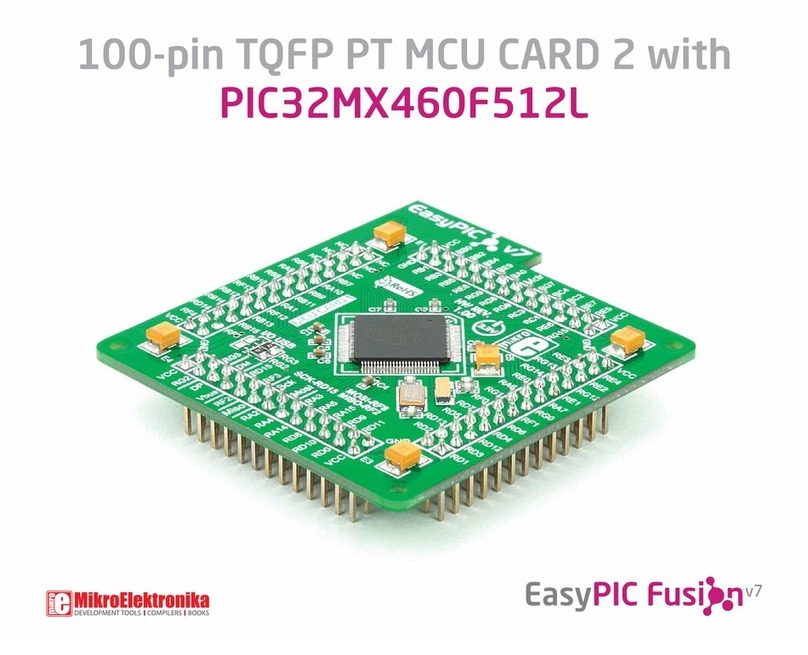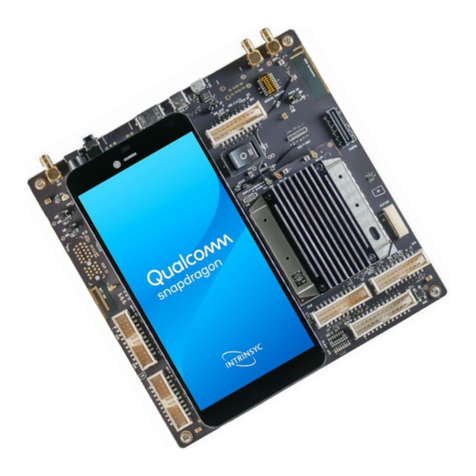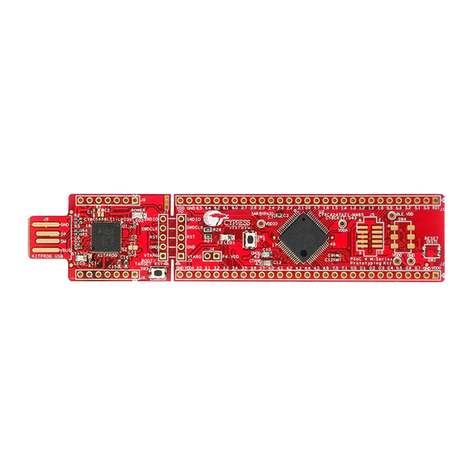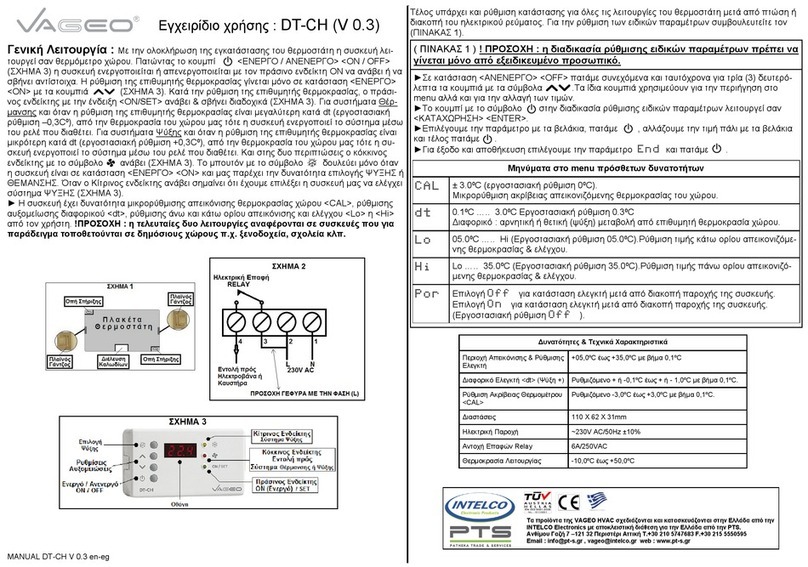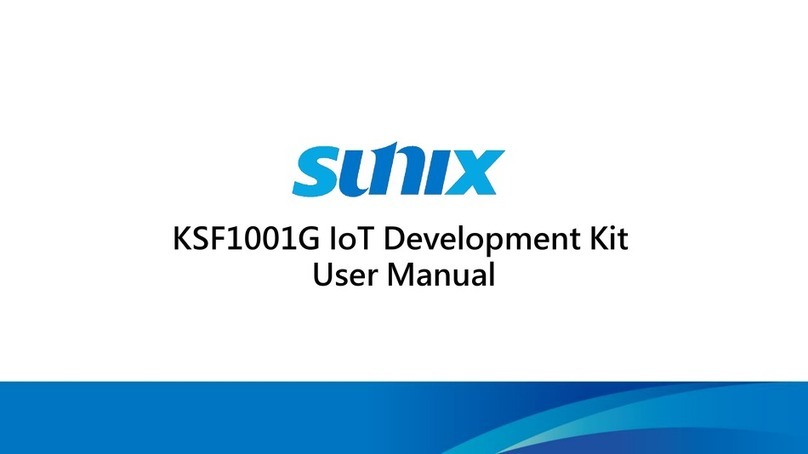Logic ZOOM ColdFire SDK User manual

ZOO M
:: ColdFire SDK ::
QuickStart Guide www.logicpd.com


ZOOM ColdFire SDK
Quickstart Guide
We fast forward
the evolution of
new products.

ZOOM ColdFire SDK
4 QuickStart Guide
Table of Contents
1Introduction 6
1.1 Zoom ColdFire SDK Development Kit Features 6
2 Getting Started 8
2.1 Unpacking the System 8
2.2 CD-ROM Content Highlights 9
2.3 Development PC Requirements 9
2.4 Baseboard Connection Diagram 10
3QuickStart 12
3.1 Inserting the Fire Engine into the Baseboard 12
3.2 Connecting the Baseboard to your PC 13
4 Test Drive the Zoom ColdFire SDK Development Kit 14
4.1 Terminal Emulation Installation 14
4.2 Power-up the Development Kit 15
4.2.1 dBUG ROM Monitor Power-up 15
4.2.2 LogicLoader (Bootloader/Monitor) Power-up 15
4.3 Using the Development Kit with the P&E ColdFire BDM Interface 16
4.4 Sample Application 17
5 Jumper/Switch Functionality 18
5.1 Jumper Settings for M5329EVB Development Kit 18
5.2 Jumper Settings for M5373EVB Development Kit 19
6 Product Notices 20
7 Product Registration 21
8 Ordering Information 22
8.1 Zoom ColdFire SDK Development Kits 22
8.2 MCF5329-10 Fire Engine Configurations 22
8.3 MCF5373-10 Fire Engine Configurations 22
9 Zoom Display Kits 23
9.1 Zoom Display Kits Specification Table 23
10 Support 24
10.1 Frequently Asked Questions 25
10.2 Technical Discussion Group 25
10.3 Warranty Statement 25

ZOOM ColdFire SDK
QuickStart Guide 5
List of Figures and Tables
Figure 2.1 –Kit Contents 8
Figure 2.2 –Connection Diagram for the Baseboard 10
Figure 3.1 –Inserting the Fire Engine into the Baseboard 12
Figure 3.2 –Connecting the Baseboard to your PC 13
Figure 3.3 –Baseboard JTAG Settings for MCF5329/73-10 Fire Engine 13
Figure 4.1 –Tera Term: Serial Port Set-up Window 14
Table 5.1 – Jumper Switch Table 18
Figure 5.2 –Jumper Settings for DB9 Header 18
Figure 5.3 –Jumper Settings for CAN 19
Table 5.4 – Jumper Switch Table 19
Figure 5.5 –Jumper Settings for DB9 Header 19

ZOOM ColdFire SDK
6 QuickStart Guide
1 Introduction
Congratulations on your purchase of the Zoom™ ColdFire® SDK Development Kit. The
Zoom ColdFire SDK Development Kit provides a product-ready hardware and software
platform for evaluating the functionality of the Freescale™ ColdFire processor and Fire Engine
System on Module. Logic’s embedded solutions fast forward product development and helps
your company stay focused on your high-value core technologies.
1.1 Zoom ColdFire SDK Development Kit Features
Common Features
+Fire Engine1
+Included—32 MB DDR SDRAM, 2 MB NOR flash, 16 MB NAND flash, Ethernet,
audio, touch2
+LCD Display Connector2
+Integrated LCD, touch, and backlight connector for Zoom Display Kits
+Audio Stereo
+Input and output jacks
+PC Card Expansion
+CompactFlash® Type I card (memory-mode only)
+Serial Port
+RS-232 debug serial port
+Expansion Headers
+Access to all Fire Engine signals
+Standard 100 mil pitch on 100 mil grid
+CAN 2.0B
+One port configurable as CAN or a second serial2
+USB
+One USB 2.0 full/low-speed host
+One USB 2.0 full/low-speed device
+Network Support
+One RJ45 Ethernet jack connector with magnetics (application/debug)
Cables
+Serial cable (null-modem)
+5 volt power supply with power adapters
+BDM adapter (USB version)
+USB cable
+Ethernet crossover cable
1. The MCF5329/73-10 Fire Engine is not compatible with Logic’s Zoom Starter Development Kit (SDK)
baseboard.
2. Only available with the MCF5329-10 Fire Engine.

ZOOM ColdFire SDK
QuickStart Guide 7
Software
+µClinux™ Board Support Packages (BSPs) are available from Freescale™
+LogicLoader™ (bootloader/monitor) installed in the Fire Engine flash
+dBUG ROM monitor installed in the Fire Engine flash
+Third-party development tools and operating system software wrapped in individual
CDs
Application Development Tools
+Cygwin, Tera Term, and GNU Cross Development Toolchain
+CodeWarrior™ Special Edition available from Freescale
Mechanical
+102 mm wide x 152 mm long x 16.8 mm high

ZOOM ColdFire SDK
8 QuickStart Guide
2 Getting Started
2.1 Unpacking the System
The Zoom ColdFire SDK Development Kit is comprised of the following items:
+Application baseboard
+System on Module Fire Engine
+CD-ROM (see "CD-ROM Content Highlights" Section)
+Null-modem serial cable
+BDM interface (USB version)
+USB cable
+Ethernet crossover cable
+5 volt power supply with power adapters (Europe, Japan, UK, and US)
+End user license agreement
+Warranty card
+QuickStart Guide
+Freescale TIC card
Note: Avoid touching the MOS devices. Static discharge can and will damage these devices.
Once you have verified that all the items are present, remove the board from its protective
jacket and anti-static bag. Check the board for any visible damage and ensure that there are
no broken, damaged, or missing parts.
Figure 2.1 – Kit Contents
Fire Engine
CD-ROM
Regulated 5 volt
Power Supply
Null-modem
Serial Cable
Ethernet
Cross-over Cable
Application Baseboard
Power Adapters
(Europe,Japan,
UK,andUS)
USB Cable
USB BDM
Interface

ZOOM ColdFire SDK
QuickStart Guide 9
2.2 CD-ROM Content Highlights
Product Documentation
+Fire Engine and Zoom ColdFire SDK product briefs
+Bill of Materials (.pdf format) for Fire Engine and application baseboard1
+Schematics (.pdf format) for Fire Engine and application baseboard1
+Fire Engine Hardware Specification
+Zoom ColdFire SDK Development Kit User’s Manual
+LogicLoader User’s Manual
+LogicLoader User’s Manual Addendum1
+MCF5329/73 Reference Manuals available for download from Freescale’s website
http://www.freescale.com/coldfire
Software Development Tools (Refer to each tool’s readme file for instructions)
+Tera Term
+Cygwin1
+GNU cross development toolchain1
+dBUG ROM monitor
+CF Flasher is available for download from http://www.freescale.com/coldfire
References, Resources, and Support
+FAQ, Technical Discussion Group
+How to get technical support (Ask a Question)
+Support Packages
Product Registration & Software Downloads
2.3 Development PC Requirements
General
+Windows® 2000 or later host PC with access to the Internet
+Pentium® processor or equivalent
+64 MB RAM minimum
+1 GB free hard disk space
+115200 baud capable RS-232 port (COM port)
+Tera Term serial emulation program (or equivalent)
+USB port to utilize BDM interface
1. Available as downloads from Logic’s website. Please create an account to access and receive notifica-
tion of the latest updates to these documents: https://www.logicpd.com/auth/.

ZOOM ColdFire SDK
10 QuickStart Guide
2.4 Baseboard Connection Diagram
Figure 2.2 – Connection Diagram for the Baseboard
BACD
E
F
GHJK
L
M
I
N
O
PQR

ZOOM ColdFire SDK
QuickStart Guide 11
Connection Diagram Details
A – RJ45 Ethernet jack with magnetics
B – Power-in from 5V regulated power supply - use appropriate power adapter
C – Stereo input—3.5mm diameter jack
D – Stereo output—3.5mm diameter jack
E – 60-pin integrated LCD, touch, and backlight connector power1
F – Expansion headers—access to all the Fire Engine signals via 100 mil pitch header
G – BDM JTAG header
H– CAN
1/UART header DB9
I – JTAG selector
J – Processor interrupt
K – System reset
L – User LEDs (power LED on left, LED0 in middle, and LED1 on right, in this view)
M– CAN1/UART header DB9 selector
N – CompactFlash Type 1 card (memory-mode only)
O – Serial port—115.2 kbps RS-232 debug serial port
P – USB function
Q– USBhost
R – Ethernet LEDs (activity LED on left and link LED on right, in this view)
1. Integrated LCD and CAN interfaces only available on the MCF5329-10 Fire Engine.

ZOOM ColdFire SDK
12 QuickStart Guide
3 QuickStart
3.1 Inserting the Fire Engine into the Baseboard
Insert the Fire Engine connector into the SODIMM connector on the baseboard.
1. Firmly press the Fire Engine into the SODIMM connector until it is fully seated.
2. Press the Fire Engine down onto the baseboard expansion connectors.
3. Verify that the expansion connectors on the Fire Engine and baseboard have mated
correctly and the SODIMM connector locks have locked with the Fire Engine down.
To remove the Fire Engine, first pull up on expansion connectors to release them,
then release the connector locks on both sides of the SODIMM connector and lift
up on the non-SODIMM edge of the Fire Engine.
Note: Please refer to Logic's White Paper 318 Card Engine Insertion and Extraction
Procedure for detailed directions on how to avoid damaging the Fire Engine when inserting
and removing it from the baseboard.
Figure 3.1 – Inserting the Fire Engine into the Baseboard
Expansion Connectors
SODIMM Connector Locks
Final Position
SODIMM Connector

ZOOM ColdFire SDK
QuickStart Guide 13
3.2 Connecting the Baseboard to your PC
1. Connect the null-modem serial cable (supplied in the kit) to the serial port
connector on the baseboard and to a COM port on the host PC. See Figure 3.2.
2. Confirm JTAG setting for use with your specific Fire Engine, as shown in Figure 3.3.
Note: Do not enable the JTAG unless you intend to use the JTAG with an
emulation tool.
3. Connect the regulated 5 volt power supply to the appropriate power adapter. Plug
the power adapter into an electrical outlet and the 5 volt line output connector into
the power connector on the baseboard.
Figure 3.2 – Connecting the Baseboard to your PC
RS-232 null-modem
Power supply & power adapter
(Europe, Japan, UK, or US)
cable to host PC
Figure 3.3 – Baseboard JTAG Settings
1
26
5
+–
1
26
5
+–
J6 J6
Normal/BDM operation JTAG operation
for MCF5329/73-10 Fire Engine

ZOOM ColdFire SDK
14 QuickStart Guide
4 Test Drive the Zoom ColdFire SDK Development Kit
4.1 Terminal Emulation Installation
The Zoom ColdFire SDK Development Kit is designed to communicate with terminal
emulation programs via the included null-modem serial cable, using the following settings:
19200 baud, 8-data-bits, no-parity, 1-stop-bit, and no-flow-control. The terminal emulation
program must support binary transfers in order to download software to the kit.
Although Logic Product Development does not support any particular terminal emulation
program, we suggest using Tera Term Pro for Windows® 2000 or Windows XP. Tera Term Pro
is provided on the CD-ROM or can be downloaded for free from Logic's website at the
following location: https://www.logicpd.com/auth/. Step-by-step installation instructions for
Tera Term can be found in the Zoom ColdFire SDK User’s Manual. Tera Term Pro is not
available for Linux users. Logic Product Development does not guarantee or support any
terminal emulation programs under Linux or Windows platforms.
Once the terminal emulation program has been installed, open a new serial port connection
using the port where the null-modem serial cable is connected. For example, using Tera Term,
set the 'baud-rate' to 19200, 'data' to 8-bit, 'parity' to none, 'stop' to 1-bit, and 'flow control'
to none.
Figure 4.1 – Tera Term: Serial Port Set-up Window

ZOOM ColdFire SDK
QuickStart Guide 15
4.2 Power-up the Development Kit
The Zoom ColdFire SDK Development Kit is shipped with both the Freescale and Logic
bootloaders installed in resident flash. The Freescale 'dBUG' ROM monitor is the default
bootloader. LogicLoader can be accessed via the dBUG ROM monitor, see Section 4.2.2.
LogicLoader provides the capability for loading operating systems and applications. In
addition, it provides a full suite of commands for interfacing to the Fire Engine. These
commands load operating systems, configure hardware platforms, bring up hardware,
customize applications, perform tests, and manage in-field devices.
4.2.1dBUG ROM Monitor Power-up
When you start up your ColdFire SDK Development Kit in Tera Term, the dBUG ROM monitor
will appear. The dBUG ROM monitor is programmed into the Fire Engine's boot flash device.
Accessing dBUG
Interface to dBUG via a terminal emulation program connected via a null-modem serial cable
to the “Terminal” port of Fire Engine. Use the following default terminal settings: 19200 baud,
8-data-bits, 1-stop-bit, no-parity, and no-flow-control.
1. Start a terminal program on the host PC (e.g., Tera Term, HyperTerminal).
2. Connect a serial cable to the host PC and to the serial port on the baseboard.
3. Connect power to the Development Kit.
4. In the terminal program you should now see a dBUG screen presenting firmware
version and the dBUG> prompt.
Note: If the dBUG monitor screen does not appear, please check Tera Term serial
settings, all cable connections, board connections, and press system reset.
5. Logic recommends that you immediately increase the baud rate for faster
downloads and for ease of interfacing to LogicLoader. To do so, enter the
command 'set baud 115200' at the dBUG prompt. Next, adjust the baud rate on
your terminal emulation program to 115200. Then press System Reset and you
should see the startup screen that you saw in Step 4. Since the dBUG monitor
program stores its settings in flash, the higher baud rate setting will remain in effect
until the next time it is changed.
4.2.2LogicLoader (Bootloader/Monitor) Power-up
The Fire Engine is shipped with a version of LogicLoader (bootloader/monitor) programmed
into the boot flash device at an offset of 0x0004_0000.

ZOOM ColdFire SDK
16 QuickStart Guide
Accessing LogicLoader
Interface to LogicLoader via a terminal emulation program connected via a null-modem serial
cable to the “Terminal” port of Fire Engine (debug serial port on the baseboard). Use the
following default terminal settings: 19200 baud, 8-data-bits, 1-stop-bit, no-parity, and no-
flow-control.
1. Start a terminal program on the host PC (e.g., Tera Term, HyperTerminal).
2. Connect a serial cable to the host PC and to the serial port on the baseboard.
3. Connect power supply to the Development Kit.
4. If you have not already done so, change the baud rate of dBUG to 115200 by
following the steps outlined in Section 4.2.1, Step 5 (above).
5. At the dBUG prompt enter the command 'go_lolo'. Press Enter.
6. In the terminal program you should now see a LogicLoader screen presenting text
similar to that below.
*****************************************************************
LogicLoader
(c) Copyright 2002-2005, Logic Product Development, Inc.
All Rights Reserved.
Version 2.1.0-MCF5329_10 0001
*****************************************************************
Type 'help all' for a list of commands.
losh>
Note: In order to configure your Fire Engine to always boot directly to LogicLoader, download
the LogicLoader .zip file found on the Logic website (https://www.logicpd.com/auth/) and
install the LogicLoader file for address 0x0000_0000. Please see the “Release Notes” in the
downloaded .zip file for more information.
4.3 Using the Development Kit with the P&E ColdFire BDM Interface
The Zoom ColdFire SDK Development Kit includes a ColdFire BDM (Background Debug
Mode) Interface from P&E Microcomputer Systems that can be used with a variety of
development tools. The installation and use of the BDM Interface may vary between different
development tool vendors.
In order to use the BDM with a particular toolset, please refer to readme files included with
each vendor's development tools for specific instructions.

ZOOM ColdFire SDK
QuickStart Guide 17
The BDM interface should be plugged into the baseboard connector J3. Use the included
USB cable to connect the BDM to your PC's USB port. Refer to the P&E Microcomputer
Systems website (https://www.pemicro.com) for the latest information on configuring the
BDM for use with your PC.
4.4 Sample Application
The Zoom ColdFire SDK Development Kit comes with a sample application that can be
downloaded from the Logic website: https://www.logicpd.com/auth/. For instructions, see
the Zoom ColdFire SDK User’s Manual and the readme file that accompanies the
downloaded sample application.

ZOOM ColdFire SDK
18 QuickStart Guide
5 Jumper/Switch Functionality
5.1 Jumper Settings for M5329EVB Development Kit
The following table describes the function of the jumpers on the MCF5329-10 Fire Engine.
CAN functionality is only available with the MCF5329-10 Fire Engine.
Table 5.1 – Jumper Switch Table
Jumper Settings Function
JP9
Jmp 1–2
3–4
5–6
When all pins of J9 have jumpers (and no
jumpers are on J10), header DB9 can be
used as a UART header. (See Figure 5.2,
below.)
JP10
Jmp 1–2
3–4
5–6
When all pins of J10 have jumpers (and
no jumpers are on J9), header DB9 can
be used as a CAN header. (See Figure
5.2, below.)
JP8
Jmp 4–6 CAN Port 0 non-terminated data line.
(See Figure 5.3, below.)
Jmp 3–5 CAN Port 0 terminated data line. (See
Figure 5.3, below.)
J6 Jmp 2-4
5
JTAG (See Figure 3.3, earlier in this
document.)
Figure 5.2 – Jumper Settings for DB9 Header
1
26
5
1
26
5
J10
J9
1
26
5
1
26
5
J10
J9
Header DB9 as
UART header Header DB9 as
CAN header

ZOOM ColdFire SDK
QuickStart Guide 19
Figure 5.3 – Jumper Settings for CAN
1
26
51
26
5
J8J8
CAN port 0
non-terminated
data line
CAN port 0
terminated
data line
5.2 Jumper Settings for M5373EVB Development Kit
The following table describes the function of the jumpers on the MCF5373-10 Fire Engine.
CAN functionality is only available with the MCF5329-10 Fire Engine.
Table 5.4 – Jumper Switch Table
Jumper Settings Function
J9
Jmp 1–2
3–4
5–6
When all pins of J9 have jumpers (and no
jumpers are on J10), header DB9 can be
used as a UART header. (See Figure 5.3,
below.)
Note: The SSI port is muxed with
UARTB. Only one port can be used at a
time.
J6 Jmp 2–4
5
JTAG (See Figure 3.3, earlier in this
document.)
Figure 5.5 – Jumper Settings for DB9 Header
1
26
5
1
26
5
J10
J9
Header DB9 as
UART header

ZOOM ColdFire SDK
20 QuickStart Guide
6 Product Notices
The Zoom ColdFire SDK Development Kit being sold by Logic and Freescale is intended for
ENGINEERING DEVELOPMENT OR EVALUATION PURPOSES ONLY. As such, the goods
being provided may not be complete in terms of required design, marketing, and/or
manufacturing related protective considerations, including product safety measures typically
found in the end product incorporating the goods. The user assumes all responsibility and
liability for proper and safe handling of the Zoom ColdFire SDK Development Kit.
ESD
Due to the open construction of the product, it is the user's responsibility to take any and all
appropriate precautions with regard to electrostatic discharge. The various debug header
pins are tied to actual lines on the Fire Engine and baseboard. Some of them will reset the
board if they are touched directly. Be aware of this situation. Logic's warranty does not cover
products damaged by ESD.
Approvals
This product is compliant with radiated emissions standard EN55022 level A, and may be
operated in industrial areas as defined by national regulations. This product may require a
special permit for operation at other locations. Cases of interference at such locations need to
be handled according to the requirements of the national EMC legislation.
Table of contents
Other Logic Microcontroller manuals
